It was not my expectation when coming to Germany to visit so many art museums and galleries. This just sort of happened. It's not that I mind, much the opposite. I like spending a few hours enjoying a few paintings. Whether it's a small regional art museum focused on a single artist or a large Kunsthalle or national gallery, I'll see what it has to offer. It feels like wherever I go, I end up at an art museum.
Hamburger Kunsthalle

Hamburger Kunsthalle
On August 25, we took a trip to the Kunsthalle (art gallery) in Hamburg. The excursion was part of the program for our language camp. The museum's collection is certainly impressive, not just including 19th century paintings, although that was certainly a focus. It took us a surprisingly long time to find Caspar David Friedrich's Wanderer above the Sea of Fog, one of the museum's most famous paintings. That only speaks to the collection's size, however. There is also a good collection of contemporary art in the basement. I was suitably impressed, and I walked through it twice because I got lost.
Rating: 👏/10
Kunstmuseum Kloster Unser Lieben Frauen Magdeburg
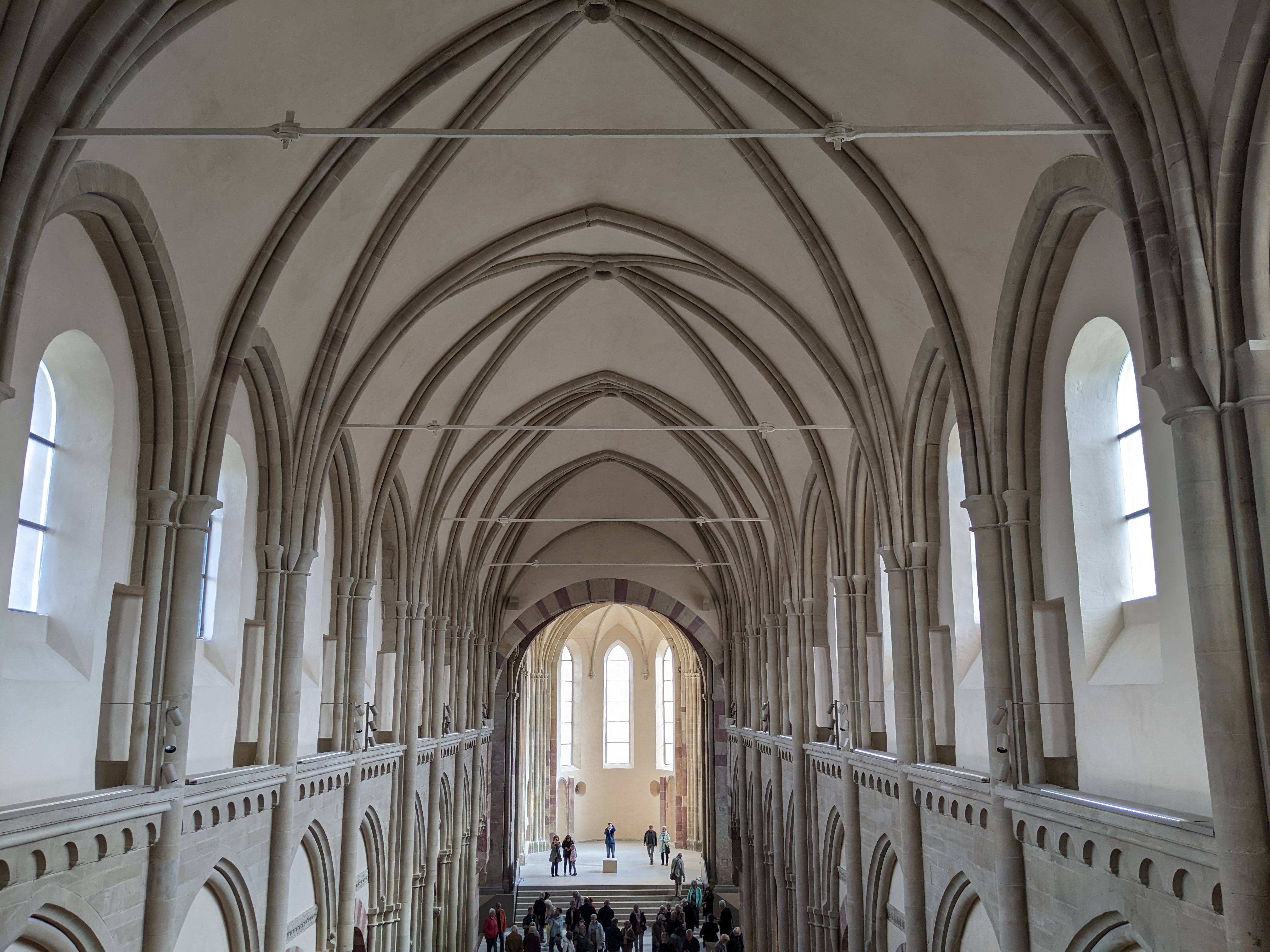
On September 17, I went to the art museum in Magdeburg. It's located inside a former monastery, the oldest building in the city. The day that I visited marked the opening of the north wing and monastery church after a renovation. The museum has a decent collection of contemporary art and a beautiful sculpture garden. It's not in the same league as larger museums like the one in Hamburg, but the collection fits the space. The building's historic architecture provides an interesting contrast to the contemporary art that lies within.
Rating: 😮/10
Lyonel Feininger Gallery
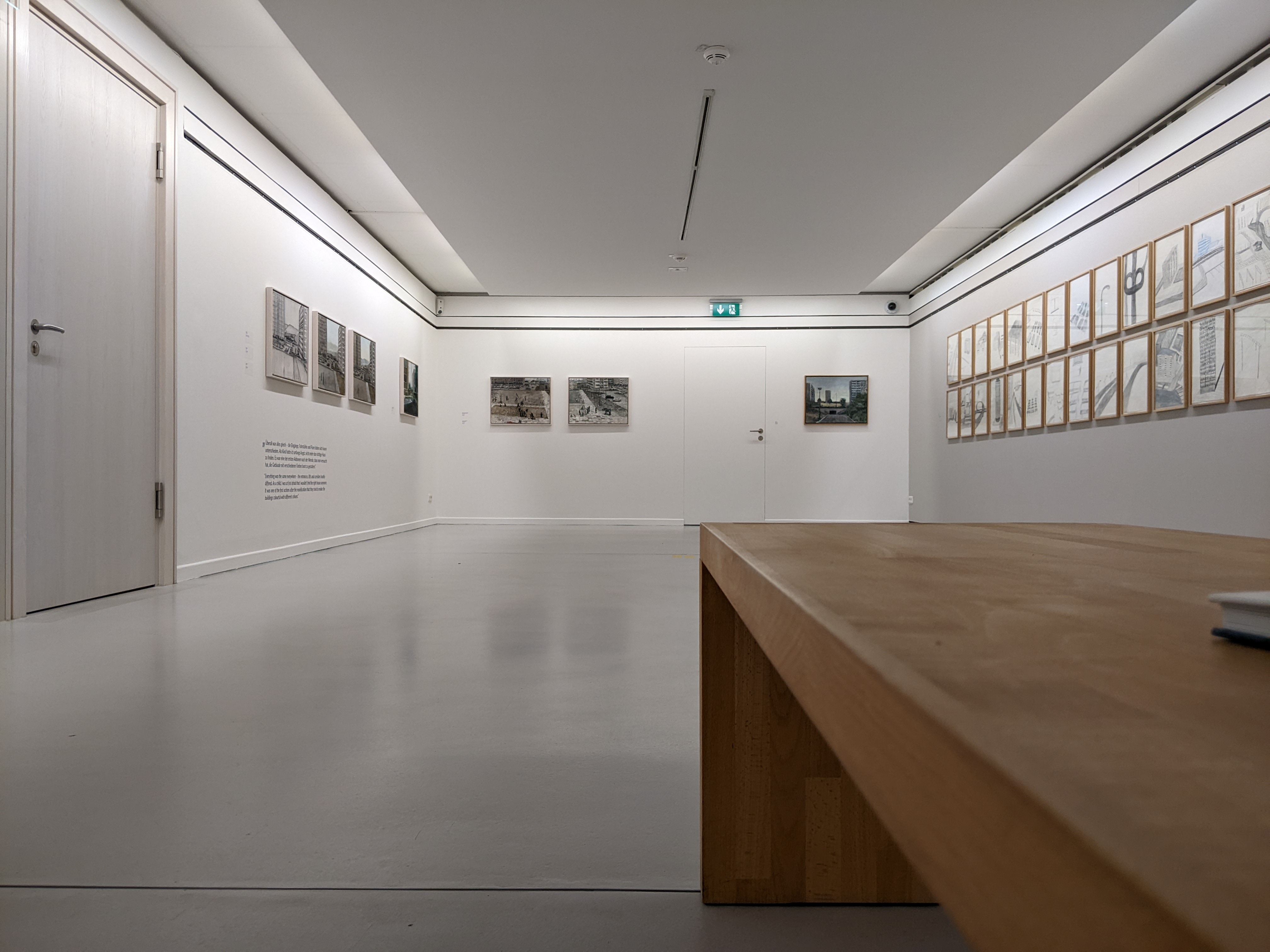
On October 22, I visited the Lyonel Feininger Gallery in Quedlinburg. It's a small museum, with the Feininger art being the main draw. As they say, good things come in small packages. I spent enough time with the collection that I could recognize a Feininger by style, which surprised me in my later visit to Berlin. I liked being able to take a deeper look into Feininger's life and artwork. His bicycle was even on display! Aside from the modest Feininger exhibit, there was an exhibit with a series of paintings from an East German artist depicting the gray Plattenbauten typical of East Germany. That did not interest me much.
Rating: 😊/10
Cranach Museum
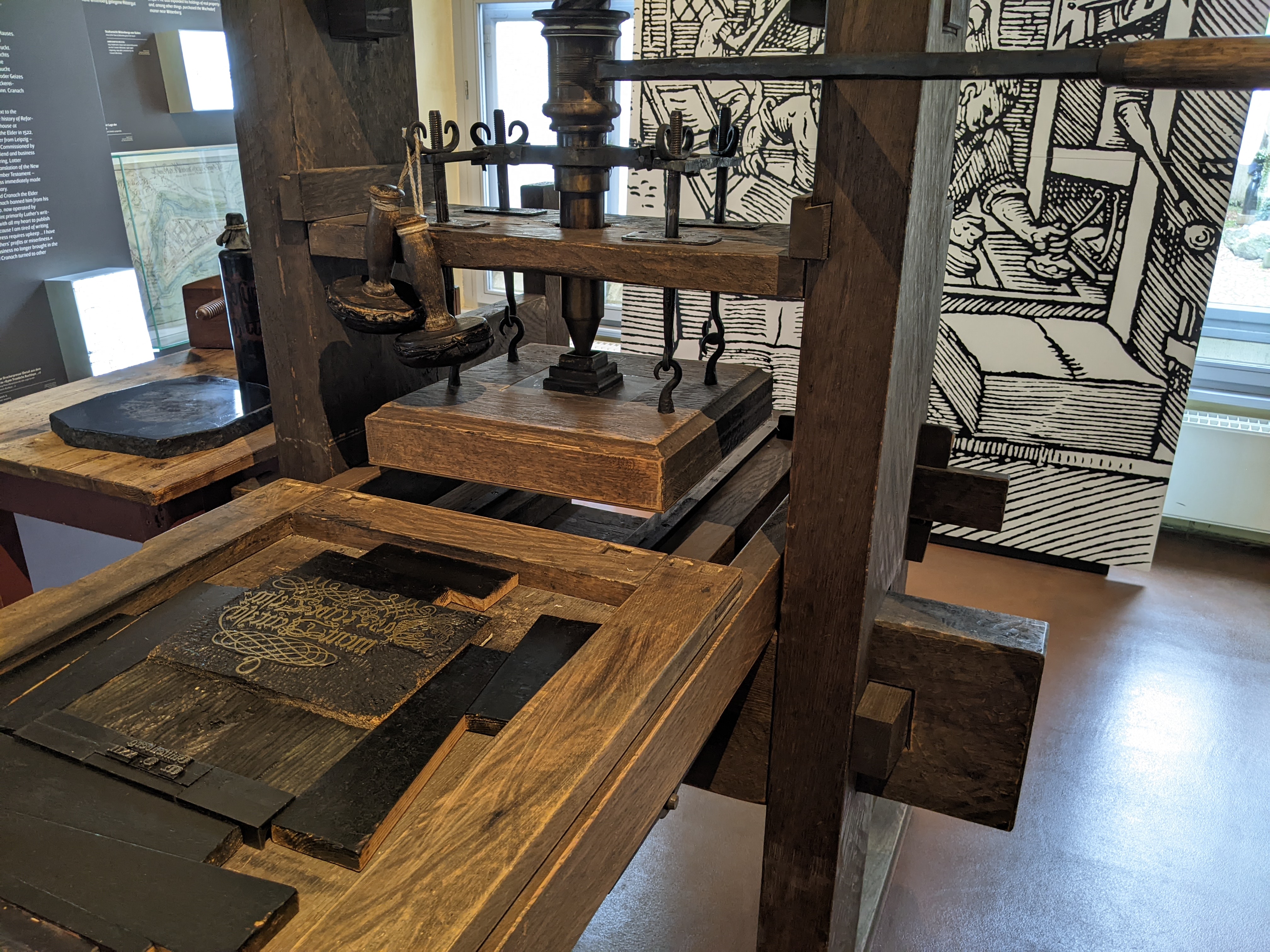
I'm not sure if this is an art museum or a historical-biographical museum about a painter, but I'll include it in this list anyway. I visited the Cranach Museum in Lutherstadt-Wittenberg on October 24. They had a special exhibit on different artists' depictions of the biblical apocalypse, which I enjoyed. The main exhibit about Cranach's life and work I did not find as interesting. I don't think they had any real Cranach paintings, but there were pictures of some on display. That's understandable because Cranach's artwork is well sought-after, but still a slight disappointment. This isn't even an art museum anyway.
Rating: 🧐/10
Museum der bildenden Künste Leipzig
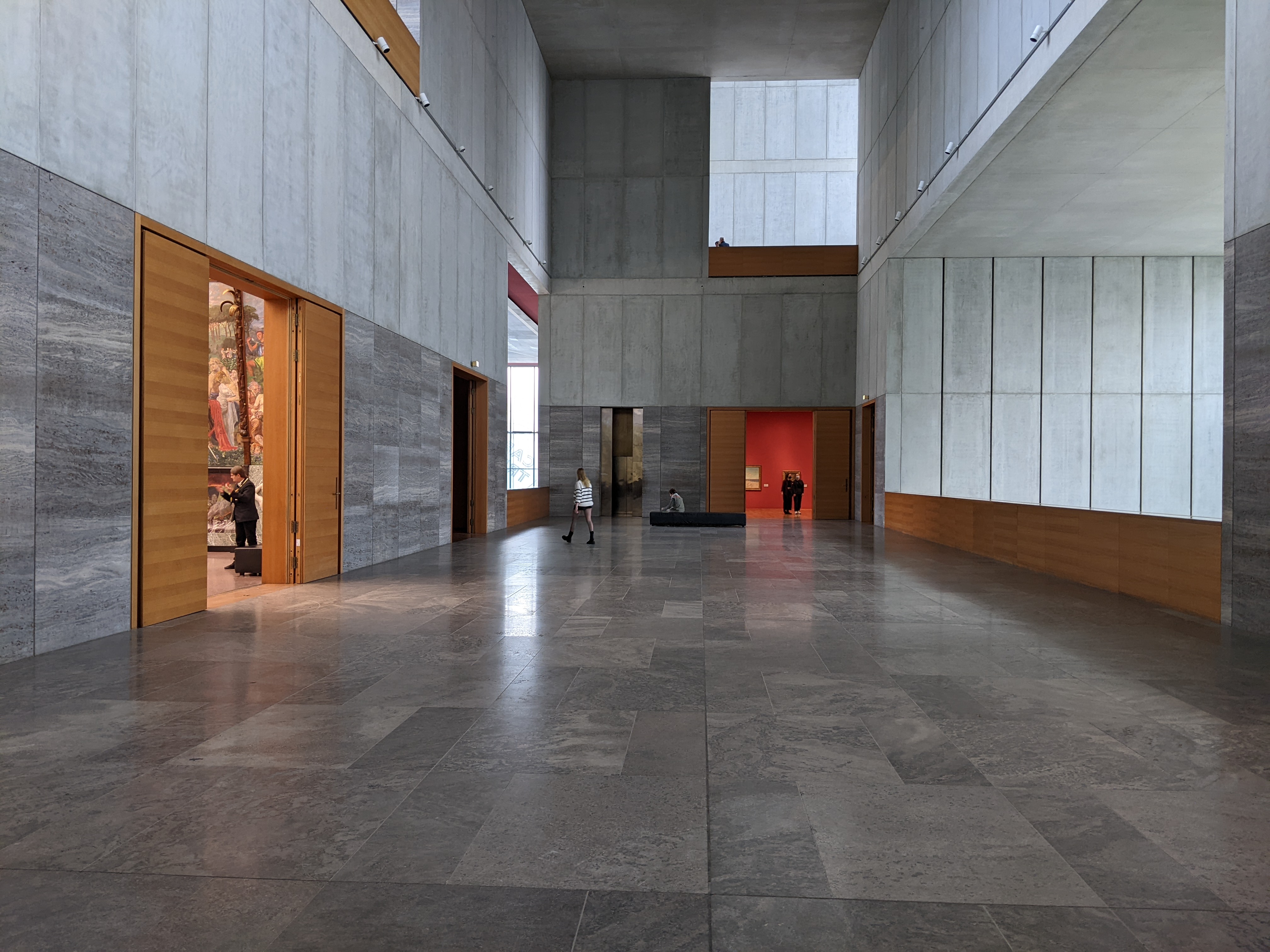
The Museum der bildenden Künste (museum of fine arts) in Leipzig contains a large collection of works spanning hundreds of years, highlighting artists from Leipzig. I visited the MdbK on October 25. The comprehensiveness of the collection rivals that of the Hamburger Kunsthalle. The collection of more recent art includes work by Max Beckmann, who was born in Leipzig. There was lots of East German art, which used symbols to express pointed criticism of the socialist system and a desire for freedom, as seen in Wolfgang Matteuer's Hinter den sieben Bergen, which depicts a long winding road into the distance to the titular seven mountains (an idiom for a far-off place) and Liberty holding colored balloons representing freedom. The museum also showcased the winners of a photojournalism contest in the basement. The modern architecture of the museum building is also worth taking a look at. The immense open space outside of the exhibition halls is breathtaking. I found myself stopping to admire it.
Rating: 😃/10
Neue Nationalgalerie
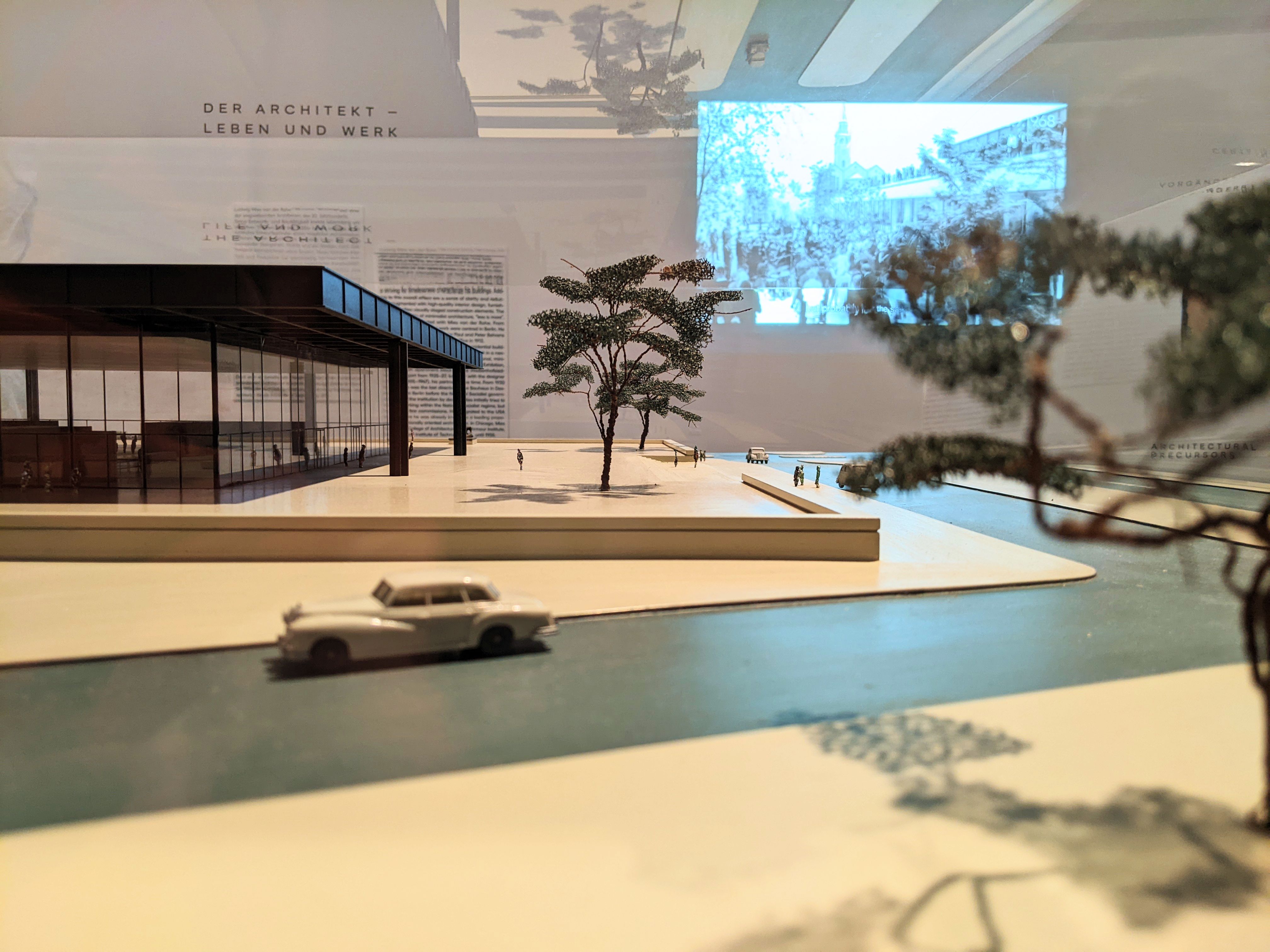
On October 28, I went to the Neue Nationalgalerie (new national gallery) in Berlin. The building's shape is the first thing you notice: a black slab forming the roof of a glass-walled hall atop a concrete platform. It almost gives the impression of a temple. I thought it was a bit odd that all the main exhibits were downstairs rather than in the glass-surrounded hall. When I visited, they showcased Stop, Repair, Prepare: Variations on "Ode to Joy" for a Prepared Piano in that space. As far as architecture goes, I preferred the Museum der bildenden Künste in Leipzig, but the collection of 20th century art here is incomparable. I enjoyed the entire collection and am finding it hard to pick one aspect that stood above the rest. There was just so much good art here!
Rating: 😍/10
Hungarian National Gallery

I visited the Hungarian National Gallery in Budapest on October 30. It primarily showcases the work of Hungarian artists. The art gallery is located inside Buda castle. You can access the building's dome from the museum to get a great view over the city. The museum's large collection includes works ranging from Renaissance stone carvings to contemporary art. I enjoyed tracing the history of the Hungarian people through the art. Each exhibit hall showed a different era of art and its historical context. I chose to visit the museum during some of my free time during the organized trip to Budapest. It was well worth it.
Rating: 🇭🇺😉/10
Museum für Kunst & Gewerbe Hamburg
On November 4, I made a visit to Hamburg's Museum für Kunst & Gewerbe (museum for arts and crafts). Unlike the other museums on this list, this is a museum for applied art. The exhibition focuses on design, and the collection includes numerous everyday objects, such as tea sets and chairs. I particularly liked the exhibit about typography and design. One of the exhibit halls was temporarily closed when I visited, but there was still plenty to see.
Rating: 🪑🤩/10
East Side Gallery
During my second trip to Berlin on November 12, I spent some time at the East Side Gallery. This is a long stretch of the Berlin Wall, left up for display. After the wall fell, artists were able to paint on the east side of the wall, creating this large open-air art gallery. I didn't get as good of a look at the art as I would have liked because it was crowded and getting dark when I visited. I plan to come back. The wall and the art tell the story of a people's desire for freedom and the hope for a better future. It asks the question: What walls need to be torn down in our world today?
Rating: 🔥/10
Herzog Anton Ulrich Museum
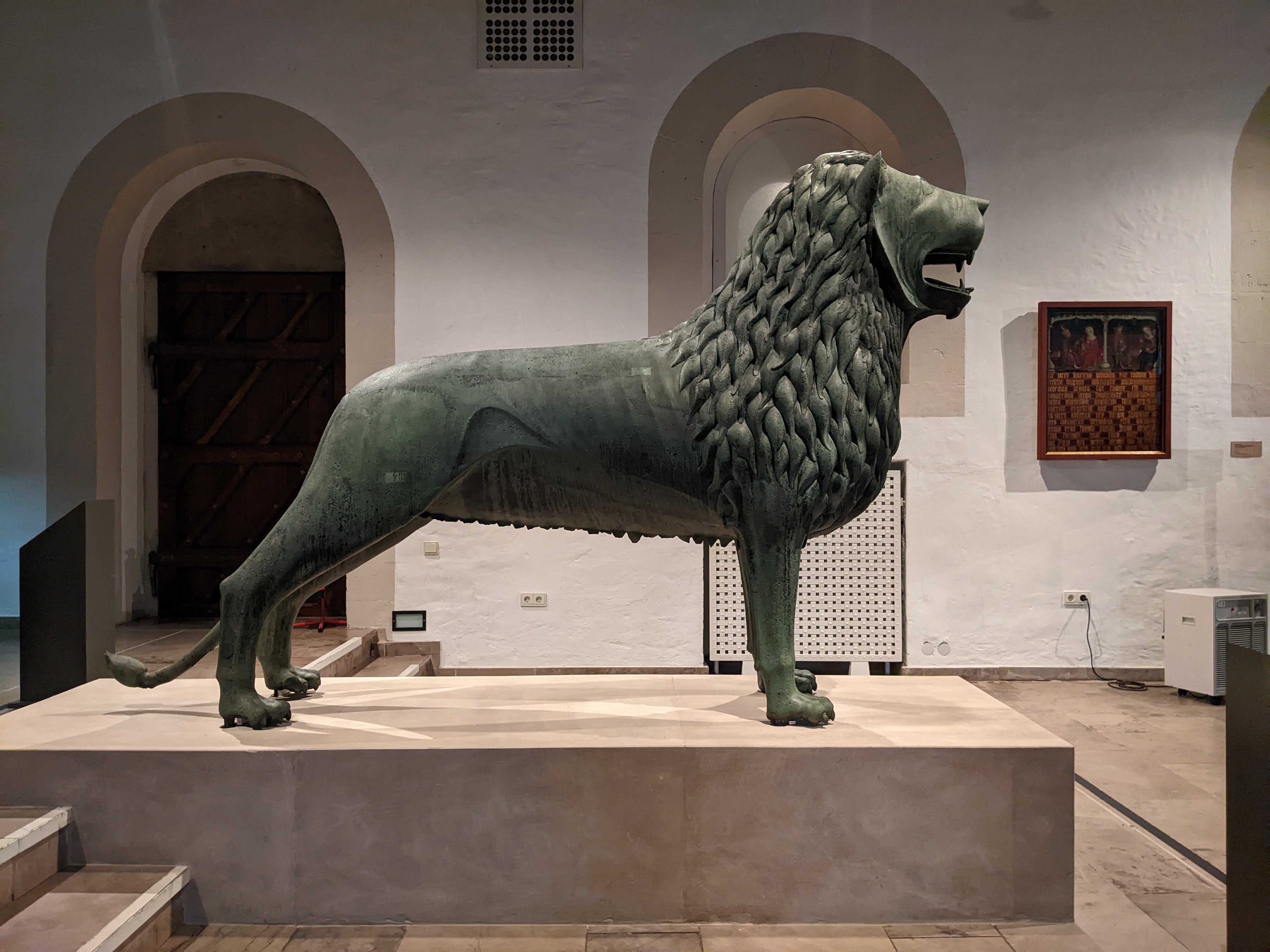
I visited the art museum in Brunswick yesterday (November 19). It's one of the oldest museums in Europe, originating from a ducal collection. There are two buildings: the large main museum and the smaller exhibition of medieval art at Dankwarderode castle. The main museum building is currently housing a special biographical exhibition on Max Beckmann. I thought the Beckmann exhibit was interesting because it drew connections between his life and inspiration to the art he created. The gallery of paintings upstairs boasts art from the Dutch and Italian masters. It even has a few paintings by Cranach. After climbing another flight of stairs, I found myself in the exhibit of applied art with its seemingly endless collection of porcelain. I continued at Dankwarderode castle after a lunch break. The castle's ornately decorated great hall is well-preserved. The biggest draw of the exhibit is the original Brunswick Lion. This sculpture is Brunswick's most recognizable landmark. A replica stands just outside in the square in front of the cathedral. Overall, I enjoyed visiting the museum, although I felt rushed because I didn't set aside enough time for what I wanted to see in the collection.
Rating: 🦁/10
Artists tell stories and art galleries share those stories with the world. A painting doesn't just reflect the artist's imagination; it reflects the culture in which it was created. I'm no expert on art, but I feel like I can better understand the stories of the people whose art I saw, from monarchies and empires to the fall of the communist regimes in East Germany and Hungary to a hopeful vision for the future.